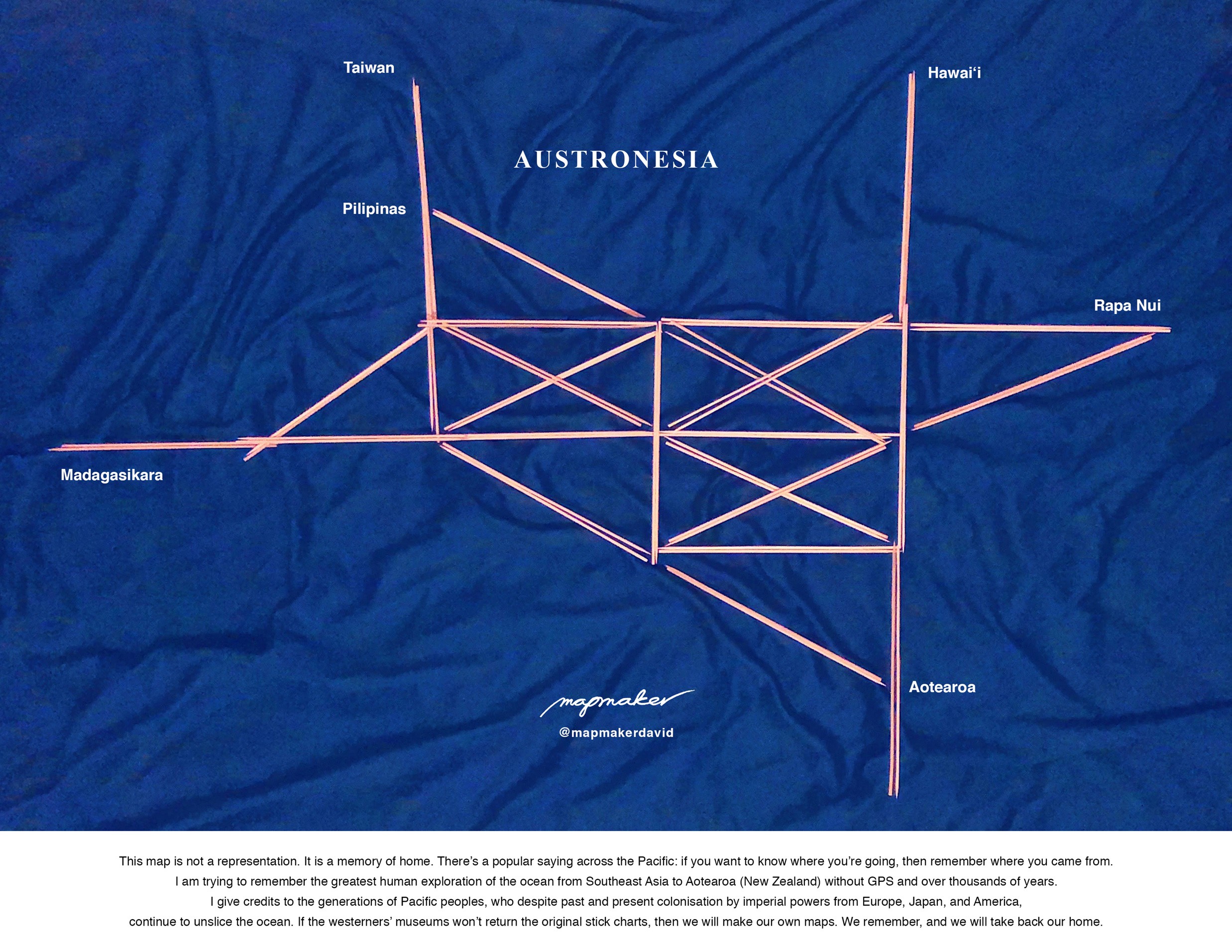INFO
| Name | David Garcia (he/they) |
| Born | 1990 |
| Country of Birth | Philippines |
| Place of Residence | Ōtautahi Christchurch |
| Ethnicities | Filipino (Kapampangan) |
| Artform | Visual arts, Socially engaged art |
| Decades Active | 2020s |
ABOUT
David Garcia is a mapmaker, urban planner and geographer from the Kapampangan (shore) and Tagalog (river) peoples of Luzon Island in the Philippines. He has formerly worked with the United Nations in typhoon-affected areas and was a faculty member at the University of the Philippines. Notably, he assisted in reconstruction planning after the Battle of Marawi in Mindanao, Philippines, and helped document the human rights violations of the US-backed Duterte regime. As a mapmaker, Garcia is on a journey of subverting and overcoming the limits of Western mapping practices to contribute to Indigenous sovereignty and liberation — a journey that has paved the way for a multi-media art practice.
Garcia gained a Master of Science in Geospatial Analysis from the University of London in 2017, and in 2018 moved to Ōtautahi Christchurch from the Philippines to complete a PhD dissertation at the University of Canterbury on indigeneity, time, space, and contemporary mapmaking from his positionality as a Filipino. His focus is on the sociotechnical and colonial nature of digital mapping, as well as the decolonial potentials of the practice. Garcia is particularly interested in how people shape maps according to their own biases, and how today's digital mapmakers can help democratise mapmaking, although it is a struggle to decolonise and politicise the production of geographic knowledge.
In 2021, a meeting with curator Ema Tavola of Vunilagi Vou turned into Garcia’s first solo exhibition. big islands deep oceans is a series of digitally constructed underwater maps of the Pacific showcasing the hidden underwater landscape. It is a body of work that invites us to reconsider the role maps play in our understanding of the Pacific Ocean. About his work, Garcia adds:
the seas of islands of the Pacific do not end at the shoreline and reefs. They continue as massive submarine structures and habitats that evolve with the water and atmosphere over time. The land/sea binary, while convenient for many, is a false notion, yet many maps operate on such binary, among other binaries.
Garcia attributes the queer community with being pivotal in his creative work: “It is from a place of refuge, especially with indigenous queers, that I was able to find ways to escape mental colonial imprisonments and create my current work.” As Garcia moves away from conventional cartography, he is continually inspired by Jim Enote, a Zuni mapmaker, who said: “There are maps in songs and in prayers. There are maps that are etched in stones and woven into textile and painted in ceramics.” Garcia adds, “in the future I would like to decentre the visual through unmapping, as mentioned by Professor Tao Leigh Goffe, whose work is in making auditory, gustatory, and many more kinds of spatial memories possible.” In his spare time, Garcia creates sonic geographies as DJ Mapmaker and enriches his practice through Filipino cuisine.
At present, Garcia is deeply inspired by wayfinding practices and his intergenerational relationships with his relations and ancestors descended from Austronesia, and their collective love for the Ocean and its peoples. For Garcia, the Boat and the Ocean are the centre of the universe.
LINKS
Key works / presentations
2023 – David Garcia: Rippling Back to the Future, Christchurch Art Gallery, Ōtautahi
2022 – Correspondence Volume 2 Issue 1, article contributor, The Physics Room zine
2021 – big islands deep oceans, Vunilagi Vou, Tāmaki Makaurau



